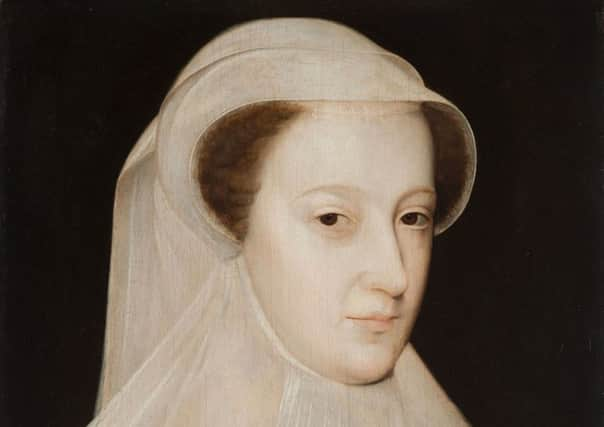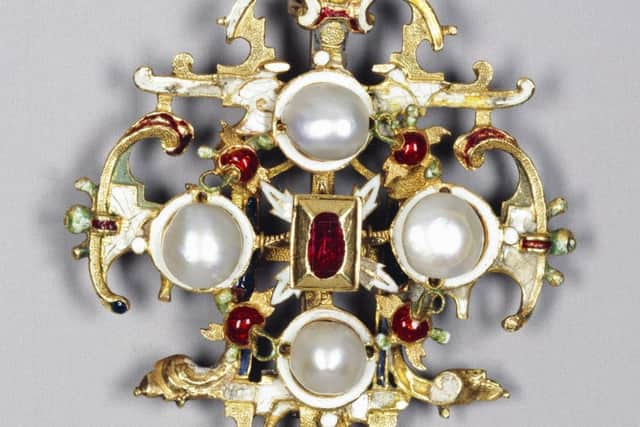Jewellery gifted by Mary Queen of Scots goes on display in Edinburgh


Now an ornate brooch gifted by the monarch to her friend and long-serving ally Mary Seton has gone on display at Holyroodhouse, the historic royal palace in Edinburgh.
The handcrafted item, made from enamelled gold and studded with pearls and rubies, dates to around 1580 - a time when Queen Mary was a prisoner in England following her abdication in 1567.
Advertisement
Hide AdIts display comes at a time when heritage chiefs are keen to attract more visitors to the palace following a major Hollywood biopic of Mary’s life.


The film, Mary Queen of Scots, stars Saoirse Ronan and goes on general release in the UK on January 18.
Mary Seton was a devoted assistant and friend of the queen and lived with her at Holyroodhouse from 1561–6. She was one of the four attendants known as the ‘Four Marys’ who spent many years in France before the young monarch returned to Scotland.
Seton continued to accompany Queen Mary during her long captivity in England and was known for her hairdressing skills. Sir Francis Knollys, an English courtier charged with the care of the Queen, noted that Mary Seton “did set such a curled hair upon the Queen... every other day she hath a new device of head dressing, without any cost, and yet setteth forth a woman gaily well”.
Queen Mary was born at Linlithgow Palace in 1542 but was sent to France six years later for her own protection. Her father, King James V, had died aged 38 when she was just six days old.
The English king, Henry VIII, was determined the young queen would be married to his son Edward and thus unite the two kingdoms.
Advertisement
Hide AdMary was sent to France in 1548 to prevent such a union by her mother, Mary of Guise, and loyal Scottish nobles.
An enraged Henry sent an army to Scotland to wreak a terrible revenge - a period of warfare now remembered as the Rough Wooing.
Advertisement
Hide AdThe queen returned to Scotland in 1561 and established her court at Holyroodhouse. Four years later she married Henry Stuart, Lord Darnley, in the Palace chapel - a decision that alienated many of her supporters.
A year later Darnley led a gang which murderered her Italian secretary, David Rizzio, in the queen’s private apartments.
The same apartments have recently been re-presented as part of a £10 million investment by Royal Collection Trust to enhance the visitor experience at Holyroodhouse. A royal residence for more than 500 years, the palace has served as home to numerous kings and queens.
Sally Goodsir, assistant curator of decorative arts, Royal Collection Trust, said: “Through new displays of the Royal Collection our visitors will be able to explore the Palace’s close association with some of Scotland’s best-known historic figures.
“We want everyone to gain a deeper understanding of Edinburgh’s royal palace and of its continuing role as the official residence of the Sovereign in Scotland.”
